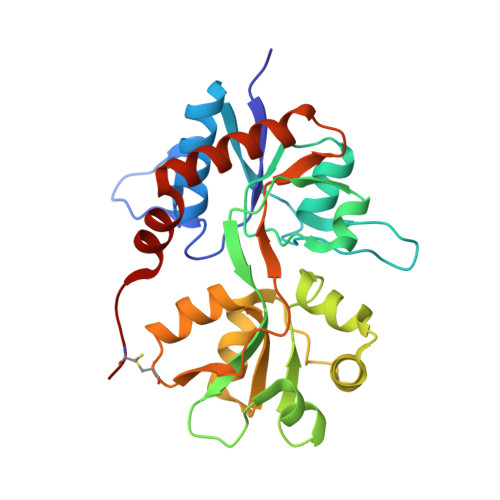Zinc Potentiates GluK3 Glutamate Receptor Function by Stabilizing the Ligand Binding Domain Dimer Interface.
Veran, J., Kumar, J., Pinheiro, P.S., Athane, A., Mayer, M.L., Perrais, D., Mulle, C.(2012) Neuron 76: 565-578
- PubMed: 23141068
- DOI: https://doi.org/10.1016/j.neuron.2012.08.027
- Primary Citation of Related Structures:
3U92, 3U93, 3U94 - PubMed Abstract:
Kainate receptors (KARs) play a key role in the regulation of synaptic networks. Here, we show that zinc, a cation released at a subset of glutamatergic synapses, potentiates glutamate currents mediated by homomeric and heteromeric KARs containing GluK3 at 10-100?¦̀M concentrations, whereas it inhibits other KAR subtypes. Potentiation of GluK3 currents is mainly due to reduced desensitization, as shown by kinetic analysis and desensitization mutants. Crystallographic and mutation analyses revealed that a specific zinc binding site is formed at the base of the ligand binding domain (LBD) dimer interface by a GluK3-specific aspartate (Asp759), together with two conserved residues, His762 and Asp730, the latter located on the partner subunit. In addition, we propose that tetrameric GluK2/GluK3 receptors are likely assembled as pairs of heterodimeric LBDs. Therefore, zinc binding stabilizes the labile GluK3 dimer interface, slows desensitization, and potentiates currents, providing a mechanism for KAR potentiation at glutamatergic synapses.
Organizational Affiliation:
University of Bordeaux, Interdisciplinary Institute for Neuroscience, UMR 5297, 33000 Bordeaux, France.



















